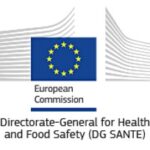 In the context of COVID-19 pandemic and launching of the ‘COVID-19 Clinical Management Support System’, DG SANTE is organising a series of webinars to support clinicians and other healthcare professionals at the frontline who treat the patients with COVID-19. We would like to invite you and any other colleague or healthcare professional of your hospital that might be interested, to the 3rd Webinar: ‘COVID-19 and anti-epileptic drugs’ that will take place on Monday 27 April, from 17:00 to 18:30. It will chaired by some of the finest experts in epilepsy in the EU – Prof Alexis Arzimanoglou, Prof. Emilio Perucca, Prof. Cecilie Landmark and Prof. Eugen Trinka. For more information click here.
In the context of COVID-19 pandemic and launching of the ‘COVID-19 Clinical Management Support System’, DG SANTE is organising a series of webinars to support clinicians and other healthcare professionals at the frontline who treat the patients with COVID-19. We would like to invite you and any other colleague or healthcare professional of your hospital that might be interested, to the 3rd Webinar: ‘COVID-19 and anti-epileptic drugs’ that will take place on Monday 27 April, from 17:00 to 18:30. It will chaired by some of the finest experts in epilepsy in the EU – Prof Alexis Arzimanoglou, Prof. Emilio Perucca, Prof. Cecilie Landmark and Prof. Eugen Trinka. For more information click here.
Publications
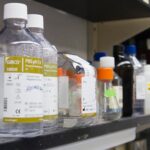 We report a case of a 3-year-old boy who presented with recurrent bacterial and fungal infections and a known diagnosis of partial DiGeorge (22q11.2 deletion) syndrome. The nature and severity of his infections were more than normally expected in partial DiGeorge syndrome with normal T-cell counts and T-cell proliferative response to phytohaemagglutinin. This prompted further investigation of the immune system. An abnormal neutrophil respiratory oxidative burst, but normal protein expression of the nicotinamide adenine dinucleotide phosphate (NADPH) oxidase system, led to the identification of myeloperoxidase deficiency. DiGeorge syndrome has a heterogeneous clinical phenotype and may not be an isolated diagnosis. It raises awareness of the possibility of two rare diseases occurring in a single patient and emphasises that even when a rare diagnosis is confirmed, if the clinical features remain atypical or unresponsive, then further investigation for additional cofactors is warranted. For more information click here.
We report a case of a 3-year-old boy who presented with recurrent bacterial and fungal infections and a known diagnosis of partial DiGeorge (22q11.2 deletion) syndrome. The nature and severity of his infections were more than normally expected in partial DiGeorge syndrome with normal T-cell counts and T-cell proliferative response to phytohaemagglutinin. This prompted further investigation of the immune system. An abnormal neutrophil respiratory oxidative burst, but normal protein expression of the nicotinamide adenine dinucleotide phosphate (NADPH) oxidase system, led to the identification of myeloperoxidase deficiency. DiGeorge syndrome has a heterogeneous clinical phenotype and may not be an isolated diagnosis. It raises awareness of the possibility of two rare diseases occurring in a single patient and emphasises that even when a rare diagnosis is confirmed, if the clinical features remain atypical or unresponsive, then further investigation for additional cofactors is warranted. For more information click here.
 This year, once again, we celebrate April 17 – World Hemophilia Day. Days before Easter, the campaign is already actively running online in the form of sharing helpful infographics and videos under the motto “Get involved too!”. A number of public figures have already recorded videos at home, sharing important information about the disease and about the patients with hemophilia. They call upon others like them to join as participants for the campaign. Each of us is invited to become involved in the distribution of information about the disease, the needs and the problems of the patients, as well as to record a short video to encourage society to be tolerant and cohesive, especially in these difficult times of social exclusion.
This year, once again, we celebrate April 17 – World Hemophilia Day. Days before Easter, the campaign is already actively running online in the form of sharing helpful infographics and videos under the motto “Get involved too!”. A number of public figures have already recorded videos at home, sharing important information about the disease and about the patients with hemophilia. They call upon others like them to join as participants for the campaign. Each of us is invited to become involved in the distribution of information about the disease, the needs and the problems of the patients, as well as to record a short video to encourage society to be tolerant and cohesive, especially in these difficult times of social exclusion.
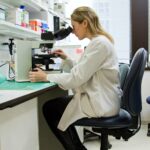 Hereditary transthyretin amyloidosis (hATTR) with polyneuropathy (formerly known as Familial Amyloid Polyneuropathy) is a rare disease due to mutations in the gene encoding transthyretin (TTR) and characterized by multisystem extracellular deposition of amyloid, leading to dysfunction of different organs and tissues. hATTR amyloidosis represents a diagnostic challenge for neurologists considering the great variability in clinical presentation and multiorgan involvement. Generally, patients present with polyneuropathy, but clinicians should consider the frequent cardiac, ocular and renal impairment. Especially a hypertrophic cardiomyopathy, even if usually latent, is identifiable in at least 50% of the patients. Therapeutically, current available options act at different stages of TTR production, including synthesis inhibition (liver transplantation and/or gene-silencing drugs) or tetramer TTR stabilization (TTR stabilizers), increasing survival at different disease stages. For more information click here.
Hereditary transthyretin amyloidosis (hATTR) with polyneuropathy (formerly known as Familial Amyloid Polyneuropathy) is a rare disease due to mutations in the gene encoding transthyretin (TTR) and characterized by multisystem extracellular deposition of amyloid, leading to dysfunction of different organs and tissues. hATTR amyloidosis represents a diagnostic challenge for neurologists considering the great variability in clinical presentation and multiorgan involvement. Generally, patients present with polyneuropathy, but clinicians should consider the frequent cardiac, ocular and renal impairment. Especially a hypertrophic cardiomyopathy, even if usually latent, is identifiable in at least 50% of the patients. Therapeutically, current available options act at different stages of TTR production, including synthesis inhibition (liver transplantation and/or gene-silencing drugs) or tetramer TTR stabilization (TTR stabilizers), increasing survival at different disease stages. For more information click here.
 With the emergence of electronic health records, the reuse of clinical data offers new perspectives for the diagnosis and management of patients with rare diseases. However, there are many obstacles to the repurposing of clinical data. The development of decision support systems depends on the ability to recruit patients, extract and integrate the patients’ data, mine and stratify these data, and integrate the decision support algorithm into patient care. This last step requires an adaptability of the electronic health records to integrate learning health system tools. In this literature review, we examine the research that provides solutions to unlock these barriers and accelerate translational research: structured electronic health records and free-text search engines to find patients, data warehouses and natural language processing to extract phenotypes, machine learning algorithms to classify patients, and similarity metrics to diagnose patients. For more information click here.
With the emergence of electronic health records, the reuse of clinical data offers new perspectives for the diagnosis and management of patients with rare diseases. However, there are many obstacles to the repurposing of clinical data. The development of decision support systems depends on the ability to recruit patients, extract and integrate the patients’ data, mine and stratify these data, and integrate the decision support algorithm into patient care. This last step requires an adaptability of the electronic health records to integrate learning health system tools. In this literature review, we examine the research that provides solutions to unlock these barriers and accelerate translational research: structured electronic health records and free-text search engines to find patients, data warehouses and natural language processing to extract phenotypes, machine learning algorithms to classify patients, and similarity metrics to diagnose patients. For more information click here.
 In the context of the fight against the coronavirus pandemic, the European Commission launched the COVID-19 Clinical Management Support System (CMSS). The aim is to support doctors, nurses, and other healthcare professionals in hospitals that are currently dealing with COVID-19 cases all over the EU, UK and the EEA countries. This system allows for the professionals to communicate easily with colleagues, exchange knowledge, discuss cases and improve training, namely via webinars. For more information click here.
In the context of the fight against the coronavirus pandemic, the European Commission launched the COVID-19 Clinical Management Support System (CMSS). The aim is to support doctors, nurses, and other healthcare professionals in hospitals that are currently dealing with COVID-19 cases all over the EU, UK and the EEA countries. This system allows for the professionals to communicate easily with colleagues, exchange knowledge, discuss cases and improve training, namely via webinars. For more information click here.
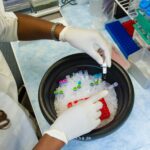 Gaucher disease (GD), a rare lysosomal storage disorder caused by deficient glucocerebrosidase activity and consequent accumulation of glycosphingolipids in the mononuclear phagocyte system, may progress to disabling and potentially life-threatening complications when left undiagnosed and untreated. Unfortunately, because of non-specific signs and symptoms and lack of awareness, patients with type 1 GD, the most common non-neuropathic variant, frequently experience diagnostic delays. Since splenomegaly and thrombocytopenia are the dominant clinical features in many GD patients leading to first medical contact, the hepatologist and the gastroenterologist need to be aware of this condition. Liver involvement has been reported in the majority of GD patients, and comprises hepatomegaly, with or without liver enzymes alteration, fibrosis/cirrhosis, portal hypertension, focal liver lesions, and cholelithiasis. For more information click here.
Gaucher disease (GD), a rare lysosomal storage disorder caused by deficient glucocerebrosidase activity and consequent accumulation of glycosphingolipids in the mononuclear phagocyte system, may progress to disabling and potentially life-threatening complications when left undiagnosed and untreated. Unfortunately, because of non-specific signs and symptoms and lack of awareness, patients with type 1 GD, the most common non-neuropathic variant, frequently experience diagnostic delays. Since splenomegaly and thrombocytopenia are the dominant clinical features in many GD patients leading to first medical contact, the hepatologist and the gastroenterologist need to be aware of this condition. Liver involvement has been reported in the majority of GD patients, and comprises hepatomegaly, with or without liver enzymes alteration, fibrosis/cirrhosis, portal hypertension, focal liver lesions, and cholelithiasis. For more information click here.
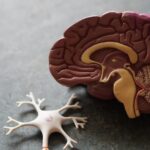 Acromegaly is a rare disease characterized by a chronic exposition to growth hormone (GH) and insulin-like growth factor-1 (IGF-1), caused in most cases by a pituitary GH-secreting adenoma. Chronic GH excess induces systemic complications (metabolic, cardiovascular, respiratory, neoplastic, and musculoskeletal) and increased mortality if not appropriately treated. Recent epidemiological data report an improved life span of patients with acromegaly probably due to better acromegaly management; additionally, the number of pituitary incidentaloma in general population also increased over time due to more frequent imaging. Therefore, the number of elderly patients, newly diagnosed with acromegaly or in follow-up, is expected to grow in the coming years and clinicians will need to be aware of particularities in managing these patients. For more information click here.
Acromegaly is a rare disease characterized by a chronic exposition to growth hormone (GH) and insulin-like growth factor-1 (IGF-1), caused in most cases by a pituitary GH-secreting adenoma. Chronic GH excess induces systemic complications (metabolic, cardiovascular, respiratory, neoplastic, and musculoskeletal) and increased mortality if not appropriately treated. Recent epidemiological data report an improved life span of patients with acromegaly probably due to better acromegaly management; additionally, the number of pituitary incidentaloma in general population also increased over time due to more frequent imaging. Therefore, the number of elderly patients, newly diagnosed with acromegaly or in follow-up, is expected to grow in the coming years and clinicians will need to be aware of particularities in managing these patients. For more information click here.
Commission encourages and facilitates cross-border treatment of patients and deployment of medical staff
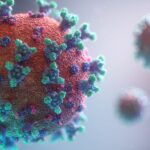 The coronavirus pandemic is putting healthcare systems across the EU under unprecedented and increasing pressure. To support and encourage cross-border healthcare cooperation between national, regional and local authorities, the Commission has today issued practical guidance to Member States. Cooperation across borders can help ease the pressure on overburdened hospitals by transferring patients suffering from coronavirus for treatment in Member States where hospital places are available. The Commission will also support Member States or non-governmental organisations to send qualified teams of medical personnel to offer assistance across borders. For more information click here.
The coronavirus pandemic is putting healthcare systems across the EU under unprecedented and increasing pressure. To support and encourage cross-border healthcare cooperation between national, regional and local authorities, the Commission has today issued practical guidance to Member States. Cooperation across borders can help ease the pressure on overburdened hospitals by transferring patients suffering from coronavirus for treatment in Member States where hospital places are available. The Commission will also support Member States or non-governmental organisations to send qualified teams of medical personnel to offer assistance across borders. For more information click here.
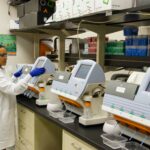 Wilson’s disease (WD) is an autosomal recessive disorder caused by ATP7B mutations. Subjects with only one mutation may show clinical signs and individuals with biallelic changes may remain asymptomatic. We aimed to achieve a conclusive genetic diagnosis for 34 patients clinically diagnosed of WD. Genetic analysis comprised from analysis of exons to WES (whole exome sequencing), including promoter, introns, UTRs (untranslated regions), besides of study of large deletions/duplications by MLPA (multiplex ligation-dependent probe amplification). Biallelic ATP7B mutations were identified in 30 patients, so that four patients were analyzed using WES. For more information click here.
Wilson’s disease (WD) is an autosomal recessive disorder caused by ATP7B mutations. Subjects with only one mutation may show clinical signs and individuals with biallelic changes may remain asymptomatic. We aimed to achieve a conclusive genetic diagnosis for 34 patients clinically diagnosed of WD. Genetic analysis comprised from analysis of exons to WES (whole exome sequencing), including promoter, introns, UTRs (untranslated regions), besides of study of large deletions/duplications by MLPA (multiplex ligation-dependent probe amplification). Biallelic ATP7B mutations were identified in 30 patients, so that four patients were analyzed using WES. For more information click here.
